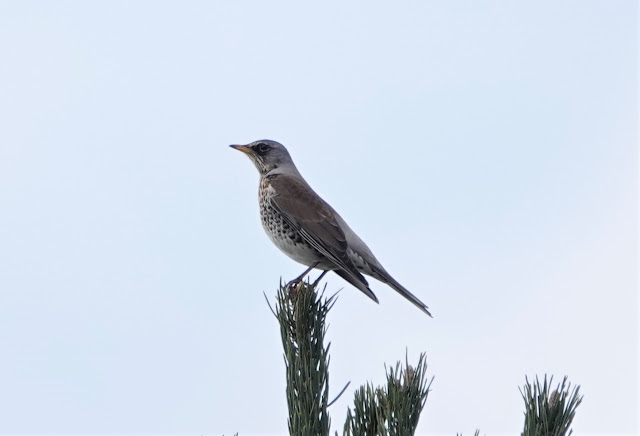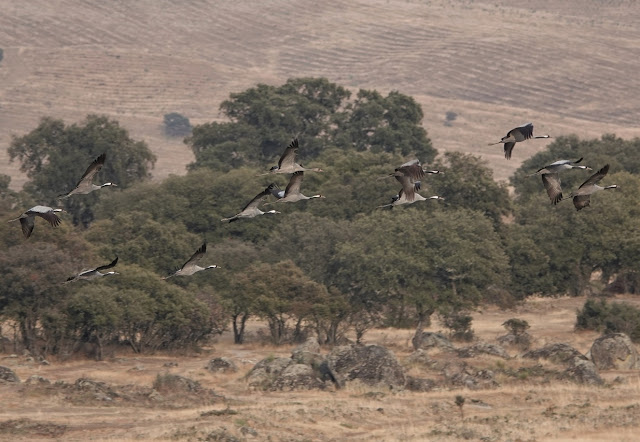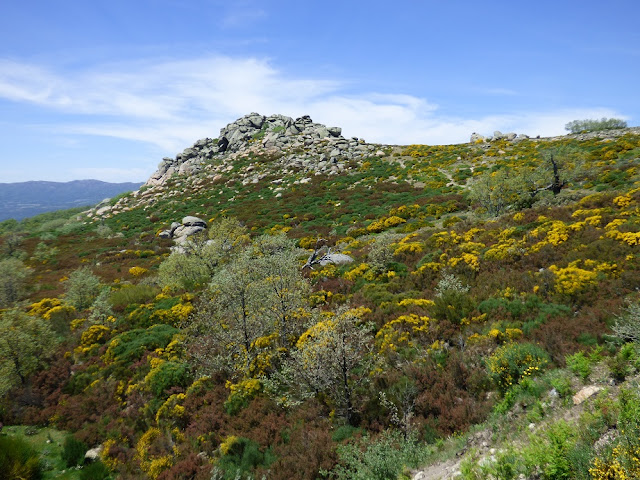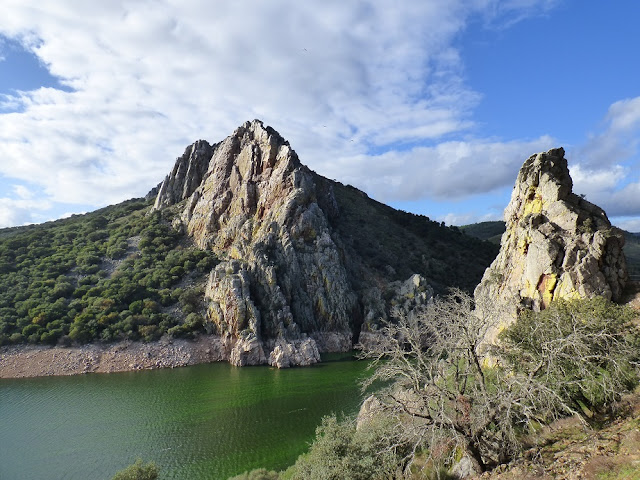Royal visitors at the northern limits

A Fieldfare "the Royal Thrush" (Martin Kelsey) There are moments and places in Extremadura which take me far from the familiar dehesas , plains and Mediterranean scrublands close to home. Indeed, one of the profound attractions of Extremadura's landscape diversity is quite simply that. I do not need to travel a long way for fresh encounters. Yesterday through winter banks of fog I headed north to the very limits of the region. Just shy of the border with Castille y Leon, I took a narrow winding mountain road through the village of La Garganta, whose population of about 400 people live at an altitude of over 1100 metres, the second highest settlement in Extremadura. Many of the inhabitants work higher still, as my route ascended I passed smallholdings and mountain meadows, patches of forestry land, a goatherd with his animals. The view to the west (Martin Kelsey) Now well above the fog, I had a view westwards across the mountains of Las Hurdes and Gata, as far a










